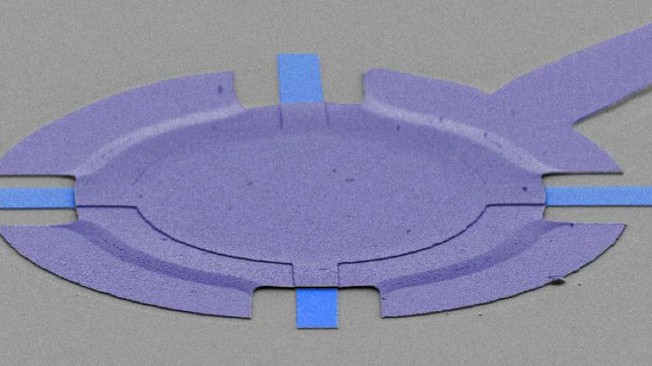EPFL’s Laboratory of Photonics and Quantum Measurements, led by Professor Tobias J. Kippenberg, will coordinate two Horizon 2020 projects for a total of €14 million. The projects will be carried out through two parallel collaborations, Hybrid Optomechanical Technologies (HOT) and Optomechanical Technologies (OMT).
The projects stem from very competitive calls of Future and Emerging Technologies (FET) Proactive (€10m) and of Marie Curie European Training Network (€4m), with success rates of 3% and 6% respectively. Key players from academia and leading industries (IBM, Bosch, Thales, Hitachi, STMicroelectronics) will unite to strengthen Europe’s leadership in quantum optomechanics.
The proactive initiative “Hybrid opto-electro-mechanical devices at the nano-scale” was launched by the European Commission in response to several granted and successful FET projects on the theme of quantum optomechanics, as well as a previous Marie Curie training network, also coordinated by EPFL.
The development of information and communication technology that pervades today’s society relies largely on the ever-increasing ability to define and control isolated physical systems at the micro- and nano- scale, and to make them interact in a controlled manner. Examples include magnetic hard drives, microelectronics or micro-electromechanical systems (MEMS), which are now ubiquitous in mobile phones, wearable gadgets, healthcare products and even cars. Likewise, integrated photonic technologies are transitioning to the market and are becoming an integral part of communication and data-center technology.
FET Proactive project
On 1st January 2017, the Hybrid Optomechanical Technologies (HOT) project was launched with a consortium of 17 partners. HOT is a 4-year project that will lay the foundation for a new generation of devices that connect or even contain several nano-scale platforms in a single “hybrid” system. These hybrid devices will allow the exploitation of the unique advantages of each subsystem, thus enabling entirely novel functionalities.
A special focus of HOT will be on nano-optomechanical devices that comprise electrical, microwave or optical systems, as well as micro- and nano-mechanical systems. Research in the past decade – in particular by European groups – has shown the significant technological potential of nano-optomechanical systems for establishing new ways in which optical, radio-frequency, and microwave signals can interface. The HOT consortium partners will explore hybrid opto- and electro-mechanical devices operating at the physical limits for conversion, synthesis, processing, sensing, and measurement of electromagnetic fields, from radio and microwave frequencies to the terahertz domain.
Marie Curie European Training Network
In a parallel effort, a Marie Curie collaborative research and training network focused on exploring new applications of Optomechanical Technologies (OMT), which brings together 14 EU partners, including IBM and Bosch. OMT kicked off on 1st October 2016, offering 15 PhD students (early-stage researchers) the opportunity to join leading research groups and participate in competitive experiments.
A series of innovative workshops, secondments and access to state-of-the art technology facilities at partner institutions will prepare PhD students for top-quality academic research and provide a platform to interact with high-profile industry partners. OMT will therefore benefit students with a valuable set of skills that extend traditional PhD training, preparing them to join the competitive ranks of academia and industry and enhancing career prospects in Europe and beyond.
Antonella Ragnelli from LPQM will oversee the coordination of HOT and OMT.
“Coordination is a huge endeavor… from the time needed to prepare a competitive proposal to creating a lasting impact,” says Professor Tobias J. Kippenberg. “But assembling the best scientific groups in Europe to advance optomechanical technologies to new frontiers more than compensates for it. Moreover, having Antonella Ragnelli as a full-time coordinator would ensure the necessary support to lead such a large consortium of partners.”
Image: A mechanically compliant capacitor: the key element of microwave optomechanical devices. Fabricated at EPFL’s Center for MicroNanoTechnology. © Daniel Toth/EPFL.



















